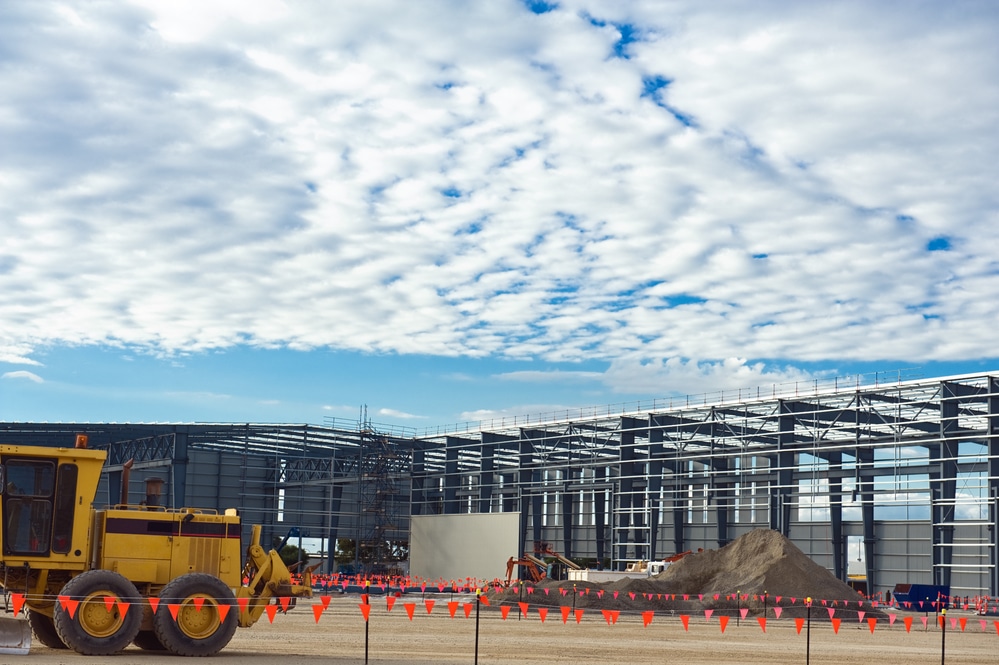BIM Modeling since its emergence in the field of AEC Industry has bolstered the information management in the form of product or process throughout the life-cycle of a building. BIM is the digital representation of the building geometry in a 3D form that helps store information that can give access to updated information about any clash detection or modification needed in the building process. Implementing BIM leads to prevent waste management, value creation, improved productivity and a better understanding of controlling costs and flow of information is available at the right time with a reduction in Clashes and eliminating delays.
SWOT analysis:
BIM Implementation in construction has brought the known marketing concept of Strengths, Weakness, Opportunity, and Threats.
Strengths:
- BIM can help reduce the waste, save time and money incurred during the project.
- BIM gives a 3D representation of a building project which helps to streamline the construction process and make it clear to operate.
- By implementing BIM, it helps to reduce the errors and avoid risks that may occur during the construction time while combining work of all disciplines as clashes are detected beforehand in the software.
- BIM applies to large, medium and small industries making the overall construction industry blooming and completely developing.
- It can minimize energy consumption in the overall building’s lifecycle.
- It can help to acquire real-time information data and transfer related to it.
- Spatial Hierarchy is present within the Object-Oriented Data Model.
- Stimulates Construction sequences.
- Improves 3D design capacity
Weakness:
- It focuses and is relying more on building rather than on information, and this outlines a 3D model representation of the building and its look-like structure. Information in terms of material specifications and cost is less used.
- BIM adoption and implementation are different worldwide that involves different standards and codes laid by the government.
- BIM acquires the need for implementation cost and higher training cost.
- BIM uses local and relative coordinates.
Opportunities:
- It is undoubtedly an amazing opportunity for the construction industry and can turn out to be a great future as it supports all the information of a project before the construction starts.
- BIM Implementation helps develop new skills of architects, engineers and contractors in the field through software updates.
- It can evaluate design proposals easily.
- It facilitates site selection.
- BIM can simplify the requirements of energy consumption and lightings.
- BIM can help in the renovation of existing projects and can check damage by conducting an assessment.
Threats:
- At times, with transfer and use of real-time information, it can overload the actual information flow between construction companies and professionals.
- Unauthorized access to building information.
- Implementing BIM can undermine the conventional method of the construction industry.
- The construction contract with BIM needs to be modified, implementation of BIM with construction contract is not easy to understand and at times become complex documentation which needs to be worked upon.
- Limitation in understanding and adopting BIM Technology as a whole, this means that the construction professionals and companies at times fail to understand what is BIM process, where should it be implemented and how it needs to get approved.
- Resistance to change and fewer suppliers available.
PESTEL analysis:
PESTEL Analysis helps to effectively count on all the disrupting factors that may result positively or negatively towards BIM. We can know how BIM Implementation would work here and how can it function properly.
Political factors
BIM Mandatory by the government for different countries:
- Building Information modeling is a process carried out in the construction industry where many countries have started adopting it and getting benefits through it.
- It builds productivity and saves time and cost effective for all the professions involved in the construction of any particular project. Government of countries like the United Kingdom, Singapore, Hong-Kong, France, Scandinavia states and China has mandated the use of BIM in government and private construction projects.
- Whereas, Countries like the United States, Belgium and Switzerland still struggle to mandate BIM through adoption is done long back.
Environmental law
- Earlier companies used to construct a building which could easily get prone to heating load, get fluctuations in other building components where the result could be collapsing or damage to structure at the end.
- But with the implementation of BIM, laws, and policies have been regulated over construction profession to keep in mind the environmental factor and make building design according to it only then it will be approved by the government so that no lives are caused harm at any point of time in any calamities.
Read more: How BIM is empowering safety on site
Economic factors
Liability of construction professions like Architects and Engineers:
- Countries like UK and US bind Architects and Engineers to take accountability of any damage or mistake done by them while working on the project. As they are not clear at what stage BIM should be implemented due to a lack of knowledge over BIM.
- So hence due to paying off more liability than the other construction professions like contractors and manufacturers, Architects and Engineers tend to avoid risk and commence any mistakes.
Social factors
Updating skill set and software knowledge in Architects and Engineers:
- In many countries, it has been observed that every 2 years Architects and Engineers for MEP discipline need to give examination to get them upgraded and know new regulations that have been revised in BIM.
- For a few professionals, this has been rigid towards working in BIM projects.
Technological factors
Dimensions in BIM:
- BIM implementation occurs within different levels and dimensions of BIM such as 3D, 4D, 5D, 6D, and 7D.
- 3D BIM is for visualizing the building and its components through preparing a 3D model of the building, helping the client to communicate well with the designs and interpret any modification at design stage easily.
- With 4D BIM, you can know the scheduling of making building components, i.e., the time required to make a window in the bedroom can be identified.
- 5D BIM helps in estimating cost behind materials, equipment, and overall construction process work.
- 6D BIM constructs energy analysis of the building along with the sustainability of it.
- 7D BIM surveys the As-Built and looks on maintenance plans and technical support.
BIM with Virtual Reality, Augmented Reality, Machine Learning, Internet of Things and Artificial Intelligence:
- Other than BIM, few trends go along with BIM which can bring milestones in the construction Industry. Augmented Reality depicts visualized model through a real-world environment.
- Virtual reality gives a virtual walkthrough in the building being constructed to enhance user-experience and supervises clashes and changes if required. Machine learning is a subcomponent of Artificial Intelligence which commands on a computer to classify algorithms, anomaly detection, and time series.
- Internet of Things has sensors added to the 3D model of BIM to acquire the aspect of energy usage patterns, temperature or people movement in the building. Artificial Intelligence helps business management to manage demand forecasting and scheduling.
Environmental factors
Energy analysis:
- It influences strongly in the building design process. The building provides shelter to occupants that are backed by mechanical heating and cooling system that is essential for protecting environmental impacts.
- Energy awareness and analysis are important over the life of the building as it would help to achieve thermal comfort.
Sustainability:
- BIM is becoming accurate and can know the calculations needed in scheduling and cost estimation. This can help in bringing minimal wastage of material purchase and improve on the construction of the building.
- Resources depletion will be reduced due to efficient information on building practices. It makes more efficient resources planning in the construction of the building.
Legal factors
Code and standards of BIM:
- 55 countries have different BIM codes and standards applicable to the construction of the project. So it becomes difficult for any other countries designer or engineers to work in that country where he is not aware of codes and standards.
- Companies due to this reason majorly get their work to outsourcing so that it saves them from causing any hindrances. Even material for creating a base of construction is different in one country from another.
- Only local designers and engineers who are well-adapted with codes and standards can work on it.
Data protection on BIM:
- Earlier when manual drafting was in place, data could get misplaced easily as many drafters print were to be taken care off and was not properly stored and incurred a lot of printing and other expenses.
- But with BIM, they can store data on a cloud server or BIM 360 cloud model which can be viewed later and re-used too.
Safety measures for workers on-site:
- BIM can empower safety on-site during the completion of the project through drone & GPS technology, smarter risk prediction; hazard stimulation and project safety awareness which aids in predict and prevent hazardous situations starting from the design stage.
- Investing in cutting-edge technology can bring a bright future to the construction industry.
Companies not using BIM what problem they have to face:
- Companies who are not adopting BIM Implementation in their construction work are struggling to achieve accuracy and better productivity in their work, make changes to clashes detected in the design process itself.
- Incur more cost on recruitment and not adapt to take safety measures on site. It becomes difficult for them to get approval by the government on their construction work and design without using BIM.
Conclusion
Marketing is vital in terms of every business, and so it is needed for the Construction Industry. BIM technology has been emerging since the ’90s and is getting implemented successfully worldwide and used in construction projects. SWOT and PESTEL analysis is a familiar marketing concept derived from finding how BIM can help the construction industry and what its drawbacks are.
BIM helps to reduce rework as clashes, or any discipline intervene is studied before the actual construction work is done. BIM aids in collaboration among all the disciplinarians involved in the construction process of a particular project.
It improves productivity and enhances the look of the building through 3D design capacity it has. Apart from that, the major drawback BIM can have its costly implementation and different codes and standards that every country would have which is a timely process.
Author Bio:
Vishakha Jadhav is a Content Writer at Tesla Outsourcing Services. A management graduate, and has a flair in writing any vertical content. She writes content to give an in-depth insight into 3D Visualization, CAD and BIM Services for the Architectural, Structural, and MEP disciplines. Her aim is to provide complete knowledge to architects and professional engineers associated with the AEC industry.






